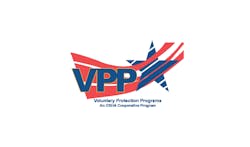ASSE President Richard A. Pollock, CSP, penned a letter to Rep. Timothy L. Walberg, R-Mich., chair of the U.S. Subcommittee on Workforce Protections, following the hearing.
“The hearing provided a positive discussion about a variety of issues related to VPP that help further the occupational safety and health community’s understanding of what best works to encourage more employers to be as committed to safety as our best employers are,” Pollock wrote in the July 6 letter.
“ASSE is a strong supporter of VPP and urges you and the Subcommittee to move forward codification of the program so that the program can become a permanent and unassailable part of OSHA’s effort to help ensure the safety of this nation’s workers,” he added.
Pollock also urged the subcommittee not to overlook a key factor in VPP’s success: the requirement that VPP participants have in place injury and illness prevention plans. He pointed out that an OSHA standard requiring all employers to have an I2P2 program in place – as employers are required to have under VPP – may help align OSHA’s overall approach to workplace regulation with how the best employers achieve safety.
“A well written OSHA I2P2 standard that truly causes a shift to risk-based approaches to safety and health among all employers can change the overall focus of OSHA’s work away from ensuring employer adherence to inflexible standards that too often lead to nitpicky enforcement efforts,” Pollock explained. “The current disconnect between how OSHA encourages employer commitment to safety and health and how the best employers achieve safety and health can be bridged.”
Additionally, the letter backed continued research into the effectiveness of all OSHA programs and agreed that incentives designed to discourage workers from reporting injuries cannot be part of VPP or any safety program.
“By identifying risks and developing a plan to address those risks, I2P2s are the primary tool that allows companies to succeed far above the minimal levels of compliance,” Pollock said. “VPP companies prove this point over and over again.”
About the Author

Laura Walter
Laura Walter was formerly senior editor of EHS Today. She is a subject matter expert in EHS compliance and government issues and has covered a variety of topics relating to occupational safety and health. Her writing has earned awards from the American Society of Business Publication Editors (ASBPE), the Trade Association Business Publications International (TABPI) and APEX Awards for Publication Excellence. Her debut novel, Body of Stars (Dutton) was published in 2021.

